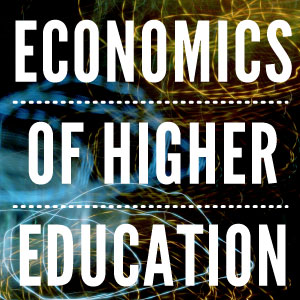By Elisabetta Marinelli (Institute for Prospective Technological Studies, Joint Research Centre, European Commission, Seville, Spain), Fernandez-Zubieta Ana (Institute for Advanced Social Studies-Spanish National Research Council (IESA-CSIC) and Elena-Perez Susana (Institute for Prospective Technological Studies, Joint Research Centre, European Commission, Seville, Spain)
DISCLAIMER: The views expressed are those of the authors and do not necessarily reflect the position of their institution of employment.
The mobility of researchers, particularly internationally, has been encouraged at the policy level to promote enriching experiences, build networks and facilitate the processes of knowledge and technology generation and dissemination. We estimate the impact of international research mobility on the careers of established university researchers working in five European countries—France, Germany, Italy, the Netherlands, and the United Kingdom. We find that stayers and researchers who return to the country of their PhD, are the most likely to achieve tenure, and repeat-migrants – who have left the country of their PhD and moved countries again since – are the least likely.
The policy support for mobility is grounded in its benefits for research systems and, in turn, for economic competitiveness. Mobility is a mechanism for knowledge diffusion, especially in its tacit and embedded features. When moving, researchers can spread and increase their human and social capital generating positive spillover effects.
While there are very strong arguments to support international research mobility, its potential for career advancement (as well as possible detrimental effects) are still not well understood. On the one hand, researchers exploit mobility to get access to the best scientific equipment and teams and to improve their career prospects (indeed, experiences abroad are sometimes required and are standard practices in certain fields after doctoral studies).
On the other, mobility may also reflect the lack of job opportunities for researchers in their home countries and even employment insecurity in academic work. Delays in obtaining a permanent position can hinder the very benefits that mobility is supposed to provide, as well as precluding opportunities for specialization, promotion, and academic recognition. As such, increased mobility may be associated with poorer job prospects. This is all the more relevant in the European academic labour market, where different national contexts provide very different incentives and opportunities.
In this context the SIMReC project has addressed the influence of international job mobility on the career consolidation of established university researchers working in five European countries—France, Germany, Italy, the Netherlands, and the United Kingdom. This topic has rarely been explored in the literature, not least because of the lack of suitable data.
We develop a five-level mobility-taxonomy” (described in box1) and apply logistic regressions to study the impact of mobility on the probability of having a tenured position.
Box1: Migration Taxonomy
Table 1: Proportion of researchers by country and type of mobility
The analysis confirms that international mobility is indeed associated with career consolidation. While further research needs to be done, our results indicate that researchers who stay in the same country as their PhD was carried out (“stayers”) and returning researchers (“returners”) are more likely to achieve a tenured position. However, repeat migrants appear to be the least likely to consolidate their career (i.e. obtain tenure), unless – and this is a notable caveat – they are more productive than their peers. In other words, the disadvantages, in terms of career consolidation, of moving repeatedly, can be compensated by higher scientific production. This results calls for a deeper understanding of the phenomenon, in order to better target policies, minimizing the individual costs of mobility while maximizing its social benefits.
Even though our results are robust to alternative specifications, one should keep in mind that the study has several limitations. Among other things we do not take into account important job characteristics such as the teaching load or the degree of autonomy in establishing one’s research agenda. Furthermore the study does not take into account cohort and vintage effects, as well as other important institutional factors, such as prestige.
A more detailed version of this study can be found in The Mobility of Students and the Highly Skilled: Implications for Education Financing and Economic Policy (2014), Gérard, M. and S. Uebelmesser, eds. CESifo Seminar Series, MIT Press. See http://mitpress.mit.edu/books/mobility-students-and-highly-skilled



